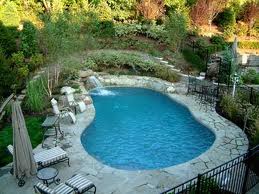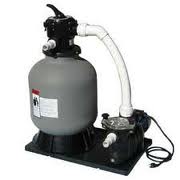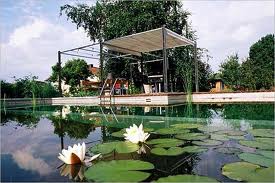 Is there anything better than a refreshing dip in the cool water of sparkling pool on a hot humid day?
Is there anything better than a refreshing dip in the cool water of sparkling pool on a hot humid day?
ARTICLE UNDER CONTSTRUCTION:
PLEASE RETURN LAAAAAAATER…
Modern swimming pool design and maintenance have been well characterized and well known for the last 40 years. Still, there are lots of misunderstandings and misconceptions floating around the web, so, here’s Yucalandia’s take on how to have a clean sparkling pool while minimizing costs.
Healthy appealing-looking water is a pool owner’s first priority.
None of us like swimming in cloudy bacteria-laden water, so lets focus on the options and what works to keep our pools in tip-top shape. Just how do we get and keep pool water clear and clean?
There are 4 basic options here, depending on how much effort and how much money you want to spend, and also if you have access to natural areas and natural water. Old School is simplest option: you regularly drain the pool and refill it, like a bath-tub. Using a nice spring or clean creek makes this a snap. Simply divert enough clean flowing water to replace the pool’s volume once a day. If you have a 20,000 gal pool, you’d need a flow of about 800 gal. per hour or 14 gal. per min to completely turn over the water in the pool about once every 2 days. Why 2 days? At these relatively low flows, and no circulating pump(s), there are lots of quiet spots where very little mixing takes place. Even though
Don’t have a spring, creek or river on your property?
Here are some basics to keep your pools clear and sparkling clean by adding electricity and chemicals:
This route basically takes the pool owner to decide exactly
~ which type of disinfectant they want to use and
~ whether they prefer larger up-front costs
~ do they prefer regularly adding disinfecting chemicals & doing regular testing or
~ do they prefer buying equipment that makes the disinfectant chemicals automatically
Most North American pool owners focus their efforts on using chlorine to disinfect their pools, but there are alternatives like ozone or UV sterilization.
1. Properly sized UV filters do kill bacteria and algae & mold spores while the water is inside the filter , but the mercury lamps intensities drop after a year – unless you have a special scientific grade lamp with halide scrubbers in the lamp gas to scrub the tungsten deposits off the quartz envelope and redeposit the tungsten back on the filament. Since UV filters coincidentally only make minimal amounts of ozone and hydroxide radicals, water treated by UV has almost no residual disinfecting power, which means that they have almost no power to kill bacteria or algae out in the pool or on the pool surfaces. This means you have to add chlorine or bromine anyway to keep the pool clean.
2. The most important issues to keeping the pool clean are
a. to remove leaves and organic debris daily by skimming and filtering – which includes having a well designed plumbing system to pull organic debris from the pool,
b. to maintain stable free chlorine levels that keeps bacteria and algae from blooming, especially after Yucatan rains that inject high dosages of algae spores,
c. maintain stable free chlorine levels by lowering the high pH of Yucatan ground water by adding acid to reduce pH to 7.2 – 7.4 ,
d. maintain stable free chlorine levels by maintaining no algae blooms by adding organic algaecides or inorganic algaecides, like copper sulfate ,
e. maintain stable free chlorine levels by adding cyanuric acid to protect the free chlorine from Yucatans strong UV sunlight doses
That last thing is one of the big tricks to why ChuckD’s pool only needs 30 minutes of pumping – because his use of chlorine pastillas, tablets or pucks, because these tablets keep free chlorine levels stable and also have cyanuric acid – which the buckets of chlorine powders do NOT include.
If you check out the realities of the salt chlorination systems, you find that the Yucatecan ground water causes them to burn through at least $5000 pesos of filaments about once a year, along with using electricity 24 hours 7 days a week.
JiminChelem is on the right track. There is a point where bigger pipes very quickly do not increase flow. For people interested in learning about this, learn about head pressure, google it, or google charts of pump flows versus inches or feet of head. Head equals back pressure caused by pumping water uphill, or through elbows or other turbulence creators- When the diameter of the pipes is large enough, then installing bigger pipes does not reduce head pressure. Elbows increase head, so having fewer elbows and having no elbows close to the pump are bigger issues than increasing tubing size on pools. If you have an elbow right before the inlet or the outlet of the pump, the turbulence from the elbow reduces pumping efficiency a lot more than increasing pool plumbing from sizes larger than 1½” or 2″. Regularly skimming your pool and backflushing your sand filter keep the sand filter from plugging, which also increases flow and filtering & pool cleaning efficiency much more than larger pipes. Jim did not know exactly why, but he knows reality from practical experience.
ChuchD’s system really does only need 30 minutes of pumping because he obviously has a well designed and well maintained system that keeps enough free chlorine to stop algae blooms and bacterial blooms. ChuckD likely has a well designed pool plumbing system that sucks up the gunk and his regular and effective pool cleaning efforts are enough to keep his organic debris loads of leaves and dust low, and by adding cyanuric acid to stabilize and protect the pool’s free chlorine, he does not have to keep adding much chlorine and does not have to run his pump much. The big chlorine tablets keep his free chlorine levels stable by slowing releasing free chlorine as it is needed and by adding cyanuric acid at the same time. The only drawbacks to using pucks is that they are more expensive, and the pool can overdose with cyanuric acid over time if you do not ever change the pool water.
Since what ChuckD does seems to be successful, it might be a good idea to study him, his system, and the practical aspects of a system that works really well, with minimal effort.
Other issues not mentioned include:
– important issues like maintaining stable constant levels of “free chlorine”,
– the critical need for using “cyanuric acid” to protect free chlorine from destruction by UV from the sun,
– key factors in designing efficient pool plumbing systems, like surface extractors,
– “head pressure” or turbulence in designing pool systems,
– the specific performance curves for different pumps and matching the plumbing to the pump,
– how filter type and regular filter maintainence are much more important that tubing size
– residual disinfecting power.
* * * *
Feel free to copy while giving proper attribution: YucaLandia/Surviving Yucatan.
© Steven M. Fry
Read on, MacDuff.





Has anyone experience with keeping the water clean through inonising it? I read up about it and it seems to be pretty good and very reasonably priced. Thanks for any feedback on that! 🙂 Beate, Valldolid.
Beate,
What is “ionising” water?
I have a doctoral degree in Water Treatment and Public Health Chemistry, and 26 years of professional experience in water testing and water treatment in 7 different countries, and I have never heard of this term. Is it possibly some new marketing ploy for selling home water treatment units?
Can you supply a weblink?
Dr. Steven M. Fry
Steven — I am REALLY enjoying your site. Amazing amounts of truly useful information. I am building a modest home on the beach in Telchac Puerto (with a small lap pool) and even though I have full faith in my architect, I feel like I need more expertise. Just catching your article on electricity in Yucatan Living has me searching for a real electrician before the project gets too far along. Do you ever consult with expats? I don’t like asking for free advise — just wondering…
Cheers, Don Rheem
Hi Don,
Yes, I enjoy working-on and diagnosing electrical issues here in Yucatan.
It’s almost a 60 minute drive out to Telchac Puerto, which costs me roughly $400 pesos round trip. My time onsite bills at $300 pesos an hour for that first hour.
That translates to just $40 US dollars for roughly 3 hours of my time … *grin*
I can provide good recommendations for electrician/plumbers also. Here: the same guy(s) do the electrical + plumbing + air conditioning installations – so one good contractor can do all 3.
Pool pump? How many air conditioners & what BTUs? Using “Inverter” air conditioners … or traditional air conditioners?
Considering using/adding wind or solar power in the future? (that means setting aside a small area out of the weather for Solar-to-grid-tied-inverters or batteries)?
Voltage surge/voltage-stabilization protection wanted/needed for computer/microwave/electronics?
I advocate installing decent voltage stabilization (conditioning) on one set of outlets => protecting one breaker with those selected outlets on that breaker. You can even add a UPS to that one breaker, which gives you conditioned clean steady power on that one set of outlets, even during short CFE outages … Sound interesting ???
e.g. If you were to put the stereo, computer, internet router and microwave oven (the truly vulnerable things) onto one set of outlets, how big a microwave oven do you plan to use (700W … or 1,600 watts)?
It’s surprisingly easy and cheap to protect 1500 watts of sensitive electronics,
and
if you don’t run the microwave oven during power outages, a good UPS can keep your internet router and computer running for hours. Since routers use only 5W to 25Watts, and laptop computers use only 20W – 50W => 50W typical total usage for a router+computer => a 1,000 VA UPS could keep that running for 5 hrs easily…
Hint: In contrast to most people’s advice, know that modern TVs have fast robust switching power supplies that easily handle voltage ranging from
90 V up to 230 V … so TVs generally do not need protection from dirty varying CFE power issues.
Interested?
steve
there is a small paperback handbook called “wiring simplified” by H.P. Richter… my copy is dated 1974. Highly recommended for learning the basics of proper wiring fixtures, connections, and wire sizes. Most of the mistakes made are actually simple to fix, but it is much better to do it right the first time. Wire SIZE is highly important and rather difficult and expensive to fix.
cheap!
Hello and good day, Steven, well… I know… it’s a long time… and I don’t think I ever responded in such a time frame… my apologies! Life just run away on me and I forgot… sorry about that!
There are a few links, and this is one of them, besides the web search. And yes, we tried one of those units you can buy, ours was called ‘Floatron’. We did try it out for some time and saw some results, together with a small amount of chlorine. But… it did work poorly, maybe because we have big trees on our property and not enough sun light for the solar to work… I don’t know. There are lots of others who claim it would work… and it all sounds pretty reasonable, just when you head towards the rainy season… nope, not working at all!
We are doing fine now for quite some time with the tablets, 3 in 1 and every once in a while a clarifier.
So I don’t think the ionizing works, but hey, never know, maybe there are other systems out there that do work…
https://www.solar-breeze.com/blog/2013/09/04/pool-water-ionization-whats-the-deal/
https://www.google.ca/?gws_rd=ssl#q=ionising+pool+water
We are here… in Valladolid. So if you happen to be near, come by for a visit as an apology for the long wait… Much greetings, and yes, very informative site, thank you,
Beate
http://www.casaaxismundi.com/
Helpul topic to keep clean in-ground swimming pool
This is one of the best ways to clean swimming swimming pool for kids.
.
I have always taken the help of swimming pool advisors for cleaning swimming pools.
Hi! Thanks for coming up with this article! Yes it is true that it is not hygienic to swim in a pool with lots of algae. So it is the owner’s responsibility to maintain the pool’s condition.